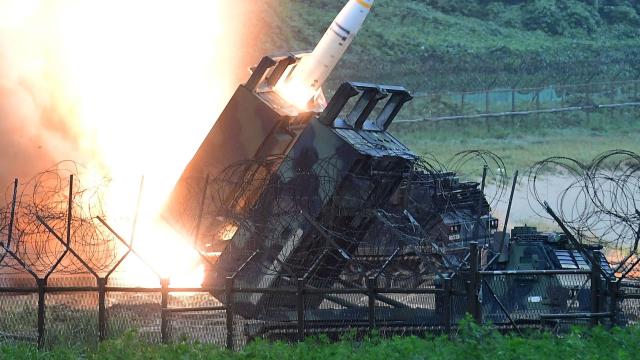Amidst growing tensions in Eastern Europe, anonymous insider sources have revealed that President Joe Biden’s administration is deliberating the transfer of MGM-140 ATACMS land Deep-Strike Missiles to Ukraine.

Deep-Strike Missiles Likely Headed to Ukraine Under Joe Biden’s Administration (Photo: Yahoo News)
ATACMS Dilemma and Russia’s Concerns
According to the news released by Popular Mechanics, in September 20, 2023, the impending transfer of MGM-140 ATACMS land deep-strike missiles from the United States to Ukraine has ignited both anticipation and controversy. Behind the scenes, anonymous sources hint at a stockpile “rediscovery” bolstering the case for this move, even though the U.S. Army had previously denied any missing ATACMS inventory. Publicly, White House officials have kept the ATACMS transfer “on the table” while navigating delicate geopolitical considerations.
Ukraine’s quest for these deep-strike missiles has gained momentum over the past year, with President Volodymyr Zelensky seeking support from the Biden administration. However, Biden’s hesitation stems from concerns about the strategic implications of providing Ukraine with such potent weaponry. Ukraine’s desire to acquire the MGM-140 ATACMS, a deep-strike missiles weapon with a range of 190 miles, has raised alarm bells in Moscow. Russia fears that supplying Ukraine with ATACMS could potentially enable provocative attacks deep into Russian territory.
Although such threats are often perceived as propaganda, they underscore the geopolitical tensions surrounding this transfer. Recent deliveries of Storm Shadow/SCALP-EG cruise deep-strike missiles by the U.K. and France to Ukraine have somewhat eased concerns, given their superior range. Yet, questions remain about the ATACMS transfer’s impact on the U.S. military’s own stockpile and the strategic balance in Eastern Europe.
READ ALSO: Sales Tax In Corpus Christi Texas To Be Repurposed As Funds For Plans Of Improvement
Role of ATACMS in Ukraine’s Arsenal
In a recent development featured by Reuters, Ukraine’s military landscape has been shaped by the acquisition of M142 HIMARS rocket artillery trucks and older M270 MLRS vehicles, both compatible with ATACMS deep-strike missiles. The ability of these vehicles to launch deep-strike missiles ATACMS missions adds a layer of complexity to the ongoing conflict. With Ukraine already owning these launch platforms and demonstrating proficiency in their use, integrating ATACMS could be a seamless transition.
Additionally, it revolves the history and evolution of ATACMS, shedding light on its role as a deep strike weapon when airstrikes are hindered and the changing dynamics of its munitions from cluster bomblets to precision-guided warheads. Also, it touches on the future with the Precision Strike Missile (PrSM) and its implications for ATACMS, both for the U.S. military and potential foreign clients. Lastly, it explores how ATACMS deep-strike missiles could impact the ongoing war in Ukraine, including the challenges and opportunities it presents for the conflict’s strategic landscape.
READ ALSO: Post-Tropical Cyclone Lee Paths And Its Impact; A Closer Look
























